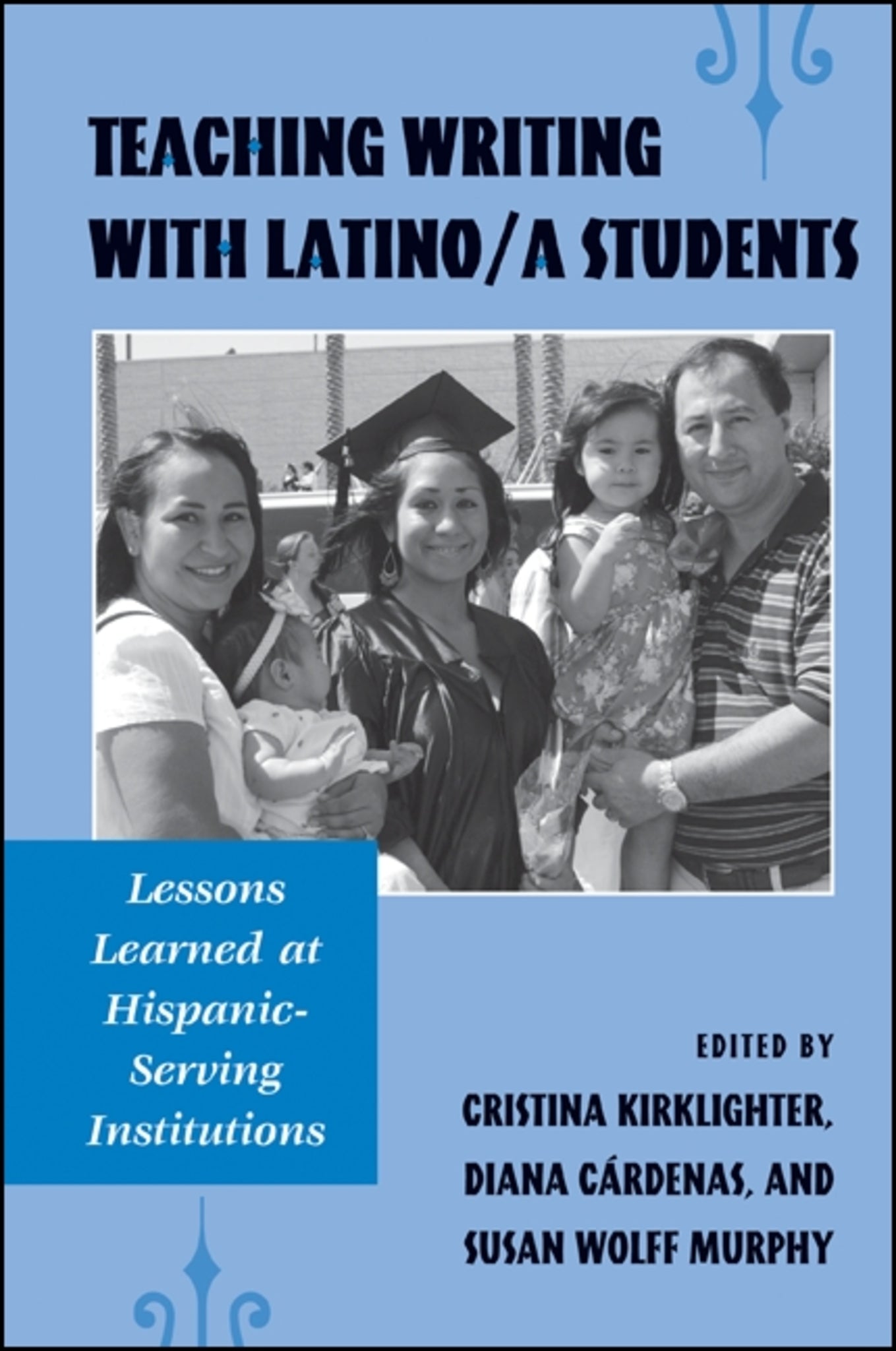We're sorry. An error has occurred
Please cancel or retry.
Teaching Writing with Latino/a Students

Some error occured while loading the Quick View. Please close the Quick View and try reloading the page.
Couldn't load pickup availability
- Format:
-
09 August 2007

Engages the complexities of teaching Latino/a students at Hispanic-Serving Institutions.
This groundbreaking collection brings together the eclectic voices of two-year and four-year writing teachers at Hispanic-Serving Institutions (HSIs) throughout the United States to explore the complexities of teaching writing with Latino/a students. Made up of narratives, qualitative studies, and conversations, the book presents the theories and practices of these experienced teachers. Its strength lies in the diversity of perspectives and methods used by these teachers to address many of the issues central to teaching Latino/a and other minority students: acknowledgment of difference, respect for diversity, student identity, students' right to their own language, and the valuing of home and school literacies and languages.


"What I have found insightful and powerful about Teaching Writing is not only its focus on a historically underrepresented student population but also its discussions about the connections between student identity and heritage, language, and geographic region—messages writing instructors across the country can benefit from." — I. Moriah McCracken, Composition Studies
"While in some ways this collection would seem to be targeting, and of most use to, teachers working in HIS's or expecting to do so, it will also be of use to composition teachers, scholars, and program administrators at all schools for its contributions to growing inquiry among compositionists into the complex relationships between language, identity, postsecondary academic performance, race, and (social) class in the U.S. college composition classroom." — WPA: Writing Program Administration
"The teachers featured in this book emphasize the need to acknowledge and celebrate the differences in language and cultures, while still remaining true to the tenets of contemporary writing instruction." — CHOICE
"…the topic of assisting Latino/a college students to success is timely, important, and necessary … [The book] acknowledg[es] and validat[es] the importance of education for all of America." — Teachers College Record
"The writers and editors of this important new book are at the forefront of the scholarship of learning for Latino students, and the summary of their experiences serves as a resource for other disciplines and for all faculty members focused on effectively engaging Latino students." — Sarita E. Brown, President, Excelencia in Education
"At a time of anti-Latino hysteria in the United States, it is good to be reminded that our Latino and Latina students come from any number of Spanish-language communities, with their varying dialects and customs. It is good to be reminded that our Latino and Latina students are many-generational U.S.-American, first generation, generation 1.5, bilingual, multilingual, monolingual in Spanish, monolingual in English. This book breaks down the monolith, not only reminding us all of the great variety within the largest language group of the Western Hemisphere, but also providing us with ways to consider and reconsider what compositionists might do in their classrooms." — Victor Villanueva, author of Bootstraps: From an American Academic of Color
"I applaud the editors and contributors for meeting the need for a pedagogically and theoretically sound work focusing on writing instruction at Hispanic-Serving Institutions. I also admire the unconventional approach that many of the contributors adopt: seeing the Hispanic writer as far more complex than is usually portrayed." — Howard Tinberg, coeditor of What Is "College-Level" Writing?
Foreword: Lessons Learned at Hispanic-Serving Institutions
Michelle Hall Kells
Acknowledgments
Introduction
Cristina Kirklighter, Susan Wolff Murphy, and Diana Cárdenas
Part 1 Introductory Chapters
1. Teaching Writing at Hispanic-Serving Institutions
Beatrice Méndez Newman
2. Teaching English in a California Two-Year Hispanic-Serving Institution: Complexities, Challenges, Programs, and Practices
Jody Millward, Sandra Starkey, and David Starkey
Part 2 We Are Not All the Same: Understanding Geographic and Cultural Differences at Hispanic-Serving Institutions
3. Discovering a "Proper Pedagogy": The Geography of Writing at the University of Texas-Pan American
Dora Ramírez-Dhoore and Rebecca Jones
4. Literate Practices/Language Practices: What Do We Really Know about Our Students?
Isabel Araiza, Humberto Cárdenas Jr., and Susan Loudermilk Garza
5. Más allá del inglés: A Bilingual Approach to College Composition
Isis Artze-Vega, Elizabeth I. Doud, and Belkys Torres
6. Un pie adentro y otro afuera: Composition Instruction for Transnational Dominicans in Higher Education
Sharon Utakis and Marianne Pita
Part 3 Considerations for Creating Effective Writing Programs at Hispanic-Serving Institutions
7. Building on the Richness of a South Texas Community: Revisioning a Technical and Professional Writing Program through Service Learning
Diana Cárdenas and Susan Loudermilk Garza
8. It Is All in the Attitude—The Language Attitude
Isabel Baca
9. Changing Perceptions, and Ultimately Practices, of Basic Writing Instructors through the Familia Approach
Barbara Jaffe
Part 4 The Personal Narrative: Exploring Our Cultures as Hispanic-Serving Institution Students and Teachers
10. The Politics of Space and Narrative in the Multicultural Classroom
Robert J. Affeldt
11. Collaboratively Mentoring Our Identities as Readers, Writers, and Teachers: A Black Cuban, Black American’s Impact on a South Texas Community
Cathy Freeze, Dundee Lackey, Cristina Kirklighter, Jennifer Anderson, Peter Cavazos, Rachel Eatmon-Hall, Misty Lynn García, Jennifer Nelson Reynolds, Sandra Valerio, Billy D. Watson, Elizabeth Worden, and Stacy Wyatt
List of Contributors
Index



